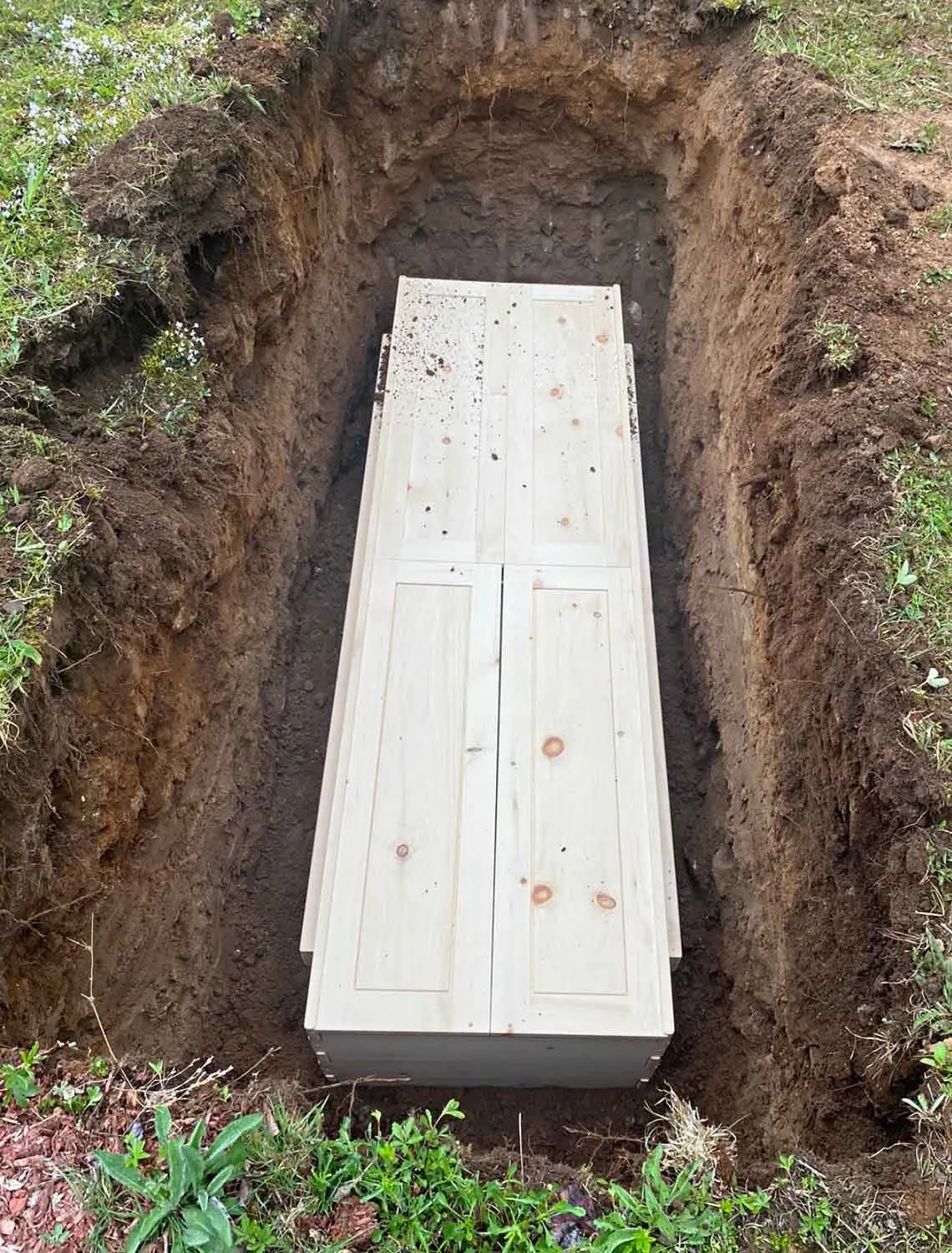A final footprint
More and more people are looking at the idea of a green burial as a way to help the planet even as they make plans to leave it.
Dr. David Patriquin, scientific mentor for the French Village Conservation Woodland, explains the ecology to a group of students who helped with research on the area. Photo courtesy of Louisa Horne.
For a growing number of Canadians, lowering their carbon footprint during their lifetime involves planning for a greener death. But a closer look at modern deathcare reveals a big carbon footprint.
In 2023, three quarters of deceased Canadians were cremated and with that comes a lot of energy to operate a crematorium’s kiln. Some sources estimate that one cremation is equivalent to heating a 2,000 sq ft home for a week, not to mention emissions from the stack.
Although cremation can be made more environmentally friendly by choosing a locally sourced urn or by neutralizing the ashes’ pH before they are spread, increasingly, people are exploring greener options.
Louisa Horne of Epilog, a Halifax-based Community Interest Company, has noticed this firsthand through her work in helping people live out their last environmental wishes.
“We support people with the transitions that they're going through, whether it's downsizing, finding new homes for things, all the way through to planning and getting all their ducks in a row in the most environmentally sensitive way,” she says.
More and more, this means helping people plan for a green burial (also called natural burial), which according to the Green Burial Society of Canada, includes “no embalming, direct earth burial, ecological restoration and conservation, communal memorialization, and optimized land use.”
Compared to conventional burial where a casket is placed in a concrete or metal vault 6ft underground, green burial has a shallower grave with the body buried in a biodegradable container like a locally made wooden coffin or a wicker basket, or, alternatively, wrapped in shroud or perhaps even your grandmother’s quilt. Green burial sites are low to no maintenance, do not use herbicides and pesticides, and are often home to locally indigenous plants.
Shroud and flowers in a green burial at Sunrise Park Interfaith Cemetery. Photo courtesy of Wayne Hatcher.
Comparing the two, the California-based Green Burial Council estimates that conventional burial emits approximately 250 lbs of carbon, while green burial sequesters (removes) about 25 lbs of carbon over a 50-year life cycle of the plot, assuming the use of a concrete vault in conventional burial, and no plot maintenance in green burial. Although the financial cost is typically secondary in the decision-making process, those opting for natural burial will typically pay thousands of dollars less compared to choosing the conventional route.
When clients tell Louisa Horne that they want a green burial, she’s pleased to tell them they have options. Sunrise Park Interfaith Cemetery in Hatchet Lake is a hybrid cemetery, with a section dedicated to green burial, and is currently the only green burial certified site east of Ontario. Horne has also found that your local cemetery can often accommodate a natural burial if you ask the right questions and are clear about your environmental wishes.
The burial option that Horne is most excited about rests in the 27 acres of forest land owned by St. Paul’s Anglican Church in St. Margaret’s Bay, Nova Scotia — a group she’s been volunteering with for the last four years.
“We are getting very close to having the first provincially designated conservation area in Canada that will have natural burial for the public,” she says.
It’s become a passion project for Horne, selfishly, she admits, because this is where she wants to end up.
Within the year, the group hopes to have the site designated as The French Village Conservation Woodland before securing it’s designation as a natural burial conservation site.
“When you are walking around that forest, it’s a different experience than walking through a contemporary cemetery,” says Horne. “It will have bird watching, exercise spaces, a seniors exercise walk, and a labyrinth. You’ll go there to spend a couple hours, and by the way, there are also people buried there because they are part of that beautiful space. It’s a different experience.”
For the families of loved ones who have chosen a green burial, it truly is a different experience. Horne has noticed that these families tend to engage with death differently, in a way that is more spiritually connected to the environment. The word that most readily comes to mind, she says, is “powerful”.
Beautiful forest of yellow birch and other trees – an ideal place for natural burial. Photo courtesy of Dr. David Patriquin.
Pine Coffin in a green burial at Sunrise Park Interfaith Cemetery. Photo courtesy of Wayne Hatcher.
Climate Stories Atlantic is an initiative of Climate Focus, a non-profit organization dedicated to covering stories about community-driven climate solutions.
Sign up for notifications of our latest free articles. You can unsubscribe at any time.




